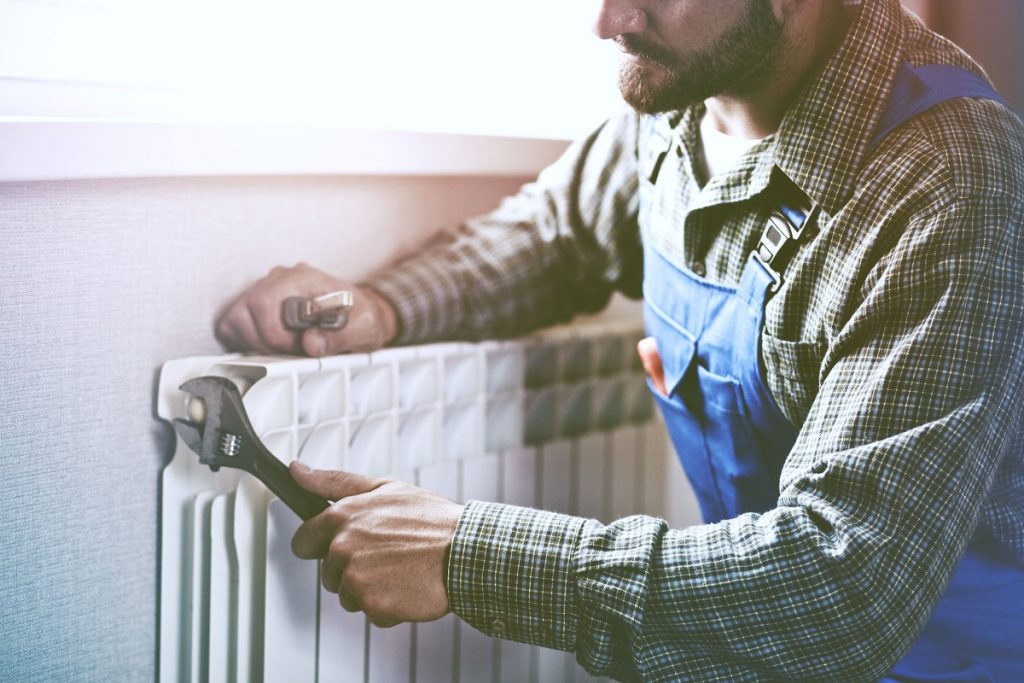- Seal any existing cracks and leaks to prevent mold from growing.
- Improve ventilation in damp areas of your home to reduce moisture levels.
- Use dehumidifiers to reduce humidity levels in the air.
- Inspect pipes for signs of damage or blockage.
- Have water damage control strategies, such as investing in quality equipment and disinfecting and sanitizing surfaces.
Mold growth in your home can be a severe health hazard, but it’s also relatively easy to prevent. Protecting your environment against mold starts with understanding the conditions that make it thrive and implementing strategies to keep those conditions from occurring. Here are five tips for protecting your home environment against mold growth.
1. Seal Any Existing Cracks and Leaks
Mold needs moisture to grow, so you should immediately seal any cracks or leaks in your walls, windows, doors, or roof. This is especially important if you live in an area where heavy rains are common. Inspect these areas regularly for any signs of water damage or leakage and take steps to repair them quickly before the problem gets worse.
You should also pay attention to any areas where two different building materials meet, such as between the foundation and walls or windowsills and frames. Inspect these areas for any signs of water damage or gaps that could let in moisture. You may need a professional contractor to inspect the area and caulk or seal it appropriately. Additionally, check any air conditioning units, ventilation systems, and pipes for leaks or signs of water damage.
2. Improve Ventilation In Damp Areas of Your Home
Poor ventilation in damp areas of your home can lead to the accumulation of moisture, which can promote mold growth. Ensure air circulates freely by using fans or opening windows in wet rooms such as bathrooms and laundry rooms. If necessary, consider installing exhaust fans to help remove moisture from the air more quickly and efficiently.
If possible, try to use natural ventilation techniques, such as positioning windows strategically in each room for cross-ventilation. This can help reduce the chance of condensation forming on cold surfaces and encourages air movement. In rooms particularly prone to dampness, you can use dehumidifiers to remove moisture from the air without relying on mechanical or natural ventilation.
3. Use Dehumidifiers to Reduce Humidity in the Air

High humidity levels can create an ideal environment for mold growth, so it’s important to keep humidity levels low in your home. You can do this by using a dehumidifier to draw moisture out of the air and keep it comfortable.
Dehumidifiers come in many sizes to suit all kinds of spaces, so choosing one that is appropriate for the area you would like to reduce moisture in is essential. A whole-house dehumidifier may be best if you want to protect your whole home from high humidity levels. These models can be connected directly to your HVAC system to manage the humidity levels throughout your home.
4. Inspect Pipes For Leaks or Blockages
Leaking pipes are one of the most common causes of mold growth in homes, so it’s important to inspect all pipes regularly for signs of damage or blockage. If you suspect a problem with your plumbing, contact a professional plumber to help identify and repair any issues before they worsen.
Inspecting pipes for leaks or blockages can be completed in a few simple steps. First, turn off all water sources in the area and check outside faucets, hoses, sprinklers, and other fixtures that may have been connected to the system. Once all water sources are turned off, visually inspect the pipes for any signs of cracks, holes, or deformities. If you find any such damage, contact a professional plumber to investigate further and repair the issue.
5. Have Water Damage Control Strategies
In addition to keeping your home environment dry, you should also have strategies for dealing with water damage if it does occur. This will ensure that the damage is contained and that you can remediate the area quickly.
Some strategies include:
Invest in Quality Equipment
Investing in quality water extraction and drying equipment can help you quickly handle a water leakage or flooding problem. A good-quality wet/dry vacuum, an industrial-grade dehumidifier, and fans to circulate the air can all be used to remove excess moisture before more serious damage occurs.
Act Quickly
If a water leak or flooding issue is identified, it’s essential to act quickly and address the problem as soon as possible. The longer the standing water sits, you can do the more damage to your home and belongings, so addressing the situation right away will help minimize losses.
Disinfect and Sanitize

Once the water is removed, you should disinfect and sanitize any surfaces affected by the water. This will help to prevent mold growth, as well as protect your family from possible bacteria or other contaminants that may be present in the water.
Contact Professionals
If the damage is extensive or the water source is unknown, it’s important to contact reliable water removal services. They will have the necessary experience and equipment to identify and adequately address the problem to minimize further damage. They will also be able to assess the damage and estimate the cost of repairs accurately.
Document Damage
For your insurance carrier to cover damages related to water leakage or flooding, you must be able to document the issue. Take photographs of any damage, and keep records of all bills related to water extraction and restoration. This will help ensure you can receive the compensation you deserve for any losses.
To Wrap It Up
By following these tips, you can take proactive steps to protect your home environment from the danger of mold growth. Sealing existing cracks and leaks, improving ventilation in damp areas, using dehumidifiers to reduce humidity levels, inspecting pipes for problems, and having water damage control strategies in place will go a long way toward keeping your home safe and healthy.

